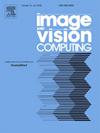用于优化和重建的 3D 高斯拼接技术最新进展综述
IF 4.2
3区 计算机科学
Q2 COMPUTER SCIENCE, ARTIFICIAL INTELLIGENCE
引用次数: 0
摘要
3D Gaussian Splatting(3DGS)是计算机图形学和视觉领域的一项重大突破,它与神经辐射场(NeRF)不同,无需依赖神经网络就能提供明确的场景表示和新颖的视图合成。本文全面介绍了近期有关 3DGS 优化和重建的研究,尤其关注已发布或即将发布开源代码的研究。在优化方面,本文探讨了压缩、致密化、分割、抗锯齿和反射增强等技术。在重建方面,论文探讨了包括表面网格提取、稀疏视图对象和场景重建、大规模场景重建以及动态对象和场景重建等方法。通过对比分析和案例研究,论文强调了 3DGS 的实用优势,并概述了未来的研究方向,为推动该领域的发展提供了宝贵的见解。本文章由计算机程序翻译,如有差异,请以英文原文为准。
A review of recent advances in 3D Gaussian Splatting for optimization and reconstruction
3D Gaussian Splatting (3DGS) represents a significant breakthrough in computer graphics and vision, offering an explicit scene representation and novel view synthesis without the reliance on neural networks, unlike Neural Radiance Fields (NeRF). This paper provides a comprehensive survey of recent research on 3DGS optimization and reconstruction, with a particular focus on studies featuring published or forthcoming open-source code. In terms of optimization, the paper examines techniques such as compression, densification, splitting, anti-aliasing, and reflection enhancement. For reconstruction, it explores methods including surface mesh extraction, sparse-view object and scene reconstruction, large-scale scene reconstruction, and dynamic object and scene reconstruction. Through comparative analysis and case studies, the paper highlights the practical advantages of 3DGS and outlines future research directions, offering valuable insights for advancing the field.
求助全文
通过发布文献求助,成功后即可免费获取论文全文。
去求助
来源期刊

Image and Vision Computing
工程技术-工程:电子与电气
CiteScore
8.50
自引率
8.50%
发文量
143
审稿时长
7.8 months
期刊介绍:
Image and Vision Computing has as a primary aim the provision of an effective medium of interchange for the results of high quality theoretical and applied research fundamental to all aspects of image interpretation and computer vision. The journal publishes work that proposes new image interpretation and computer vision methodology or addresses the application of such methods to real world scenes. It seeks to strengthen a deeper understanding in the discipline by encouraging the quantitative comparison and performance evaluation of the proposed methodology. The coverage includes: image interpretation, scene modelling, object recognition and tracking, shape analysis, monitoring and surveillance, active vision and robotic systems, SLAM, biologically-inspired computer vision, motion analysis, stereo vision, document image understanding, character and handwritten text recognition, face and gesture recognition, biometrics, vision-based human-computer interaction, human activity and behavior understanding, data fusion from multiple sensor inputs, image databases.
 求助内容:
求助内容: 应助结果提醒方式:
应助结果提醒方式:


